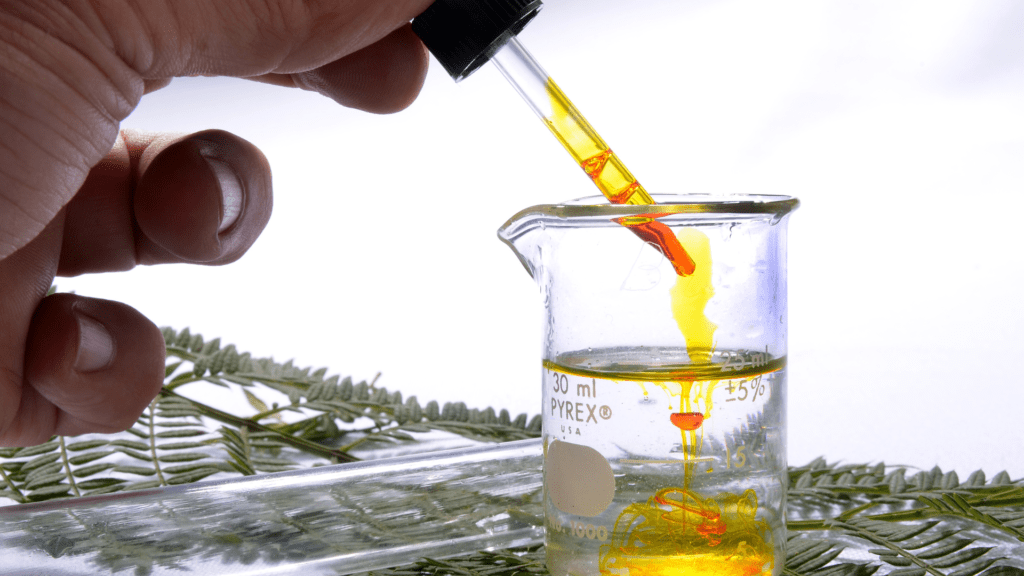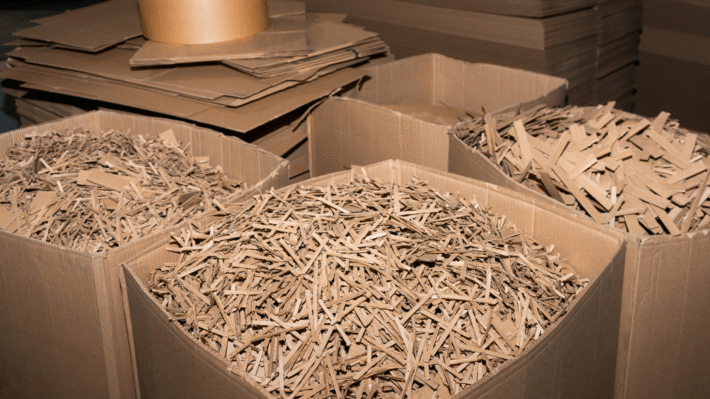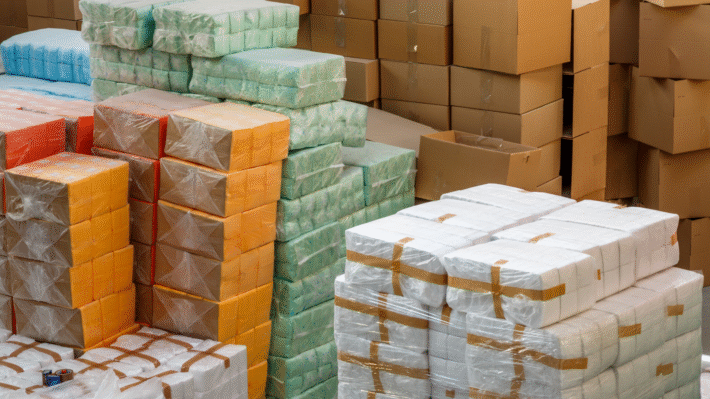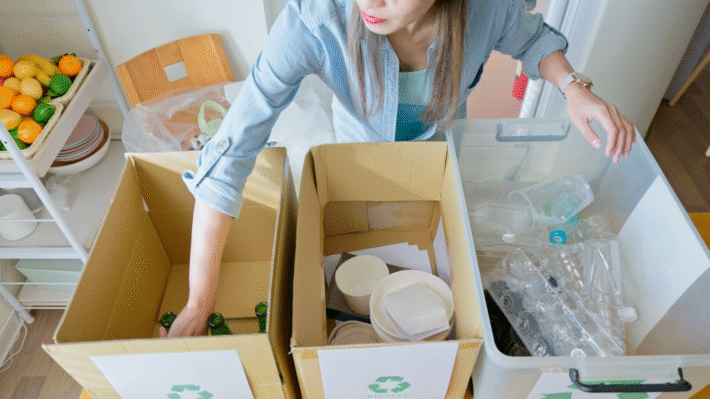Catalysts for Milder Reaction Conditions: Boosting Safety and Chemical Sustainability

Milder reaction conditions? You bet! In the bustling world of chemistry, who wouldn’t want safer and sustainable reactions? That’s where catalysts come into play. They’re the unsung heroes that make reactions happen effortlessly under gentler conditions. Forget harsh environments with sky-high temperatures or toxic reagents. Using catalysts can lead to safe, energy-efficient, and eco-friendly processes.
Catalysts like transition metals and enzymes reshape reaction pathways, reducing energy use and improving safety. Plus, they get the job done with a lower carbon footprint. Imagine a world where chemistry aligns with green principles. Exciting, isn’t it? Let’s embark on an exploration of how catalysts revolutionize the field, pave the way for innovation, and contribute to a sustainable future. Stay tuned!
Catalysts: The Key to Milder Reaction Conditions
Catalysts are like magic keys that unlock chemical reactions, making them happen under milder conditions. By using catalysts, we can make reactions safer, cheaper, and better for our planet. This part of the article will dive into what catalysts do and the different types of catalysts used today.
What Do Catalysts Do?
Catalysts are special substances that help chemical reactions move along much faster. Think of them as the turbo boost in a race car, speeding things up without getting used up themselves.
Speeding Up Reactions
When we talk about speeding up reactions, catalysts take center stage. They lower the barriers that usually slow reactions down. Imagine you are climbing a big hill. Catalysts make the hill smaller so you can get to the top much quicker.
How Catalysts Work: Lower Activation Energy
The magic of catalysts is in their ability to lower activation energy. Activation energy is like the kickstart needed to get a reaction going. By reducing this, catalysts make it easier for reactions to happen. It’s like opening a big door that was too heavy to push before!
Types of Catalysts
Catalysts come in different types, and each has its own way of helping chemical reactions happen under milder conditions.
Homogeneous and Heterogeneous Catalysts
Homogeneous catalysts are mixed evenly in the same phase as the reactants, like sugar dissolving in water. This closeness helps reactions happen faster. On the other hand, heterogeneous catalysts are like a bridge where reactants gather to react. They stay separate, like oil in water, but provide a handy surface for reactions to happen on.
Biocatalysts: Nature’s Helpers
Biocatalysts, like enzymes in our bodies, are nature’s way of speeding things up. They work gently and specifically, making them perfect for delicate processes. Enzymes help make our bread rise, our bodies digest food, and even produce medicines. Working at room temperature, they are champions of mild conditions!
Catalysts truly are the unsung heroes in making chemical reactions safer, quicker, and more earth-friendly. With them, we can achieve more while using less energy and creating fewer harmful by-products.
Why Milder Conditions Are Better
When we talk about milder conditions in chemistry, we’re discussing a way to make reactions safer and friendlier to the environment. That’s thanks to some powerful stuff called catalysts. Let’s dive into why these conditions are so great.
Saving Energy and Resources
Less Energy Usage
Using milder reaction conditions means we don’t have to turn up the heat or crank up the pressure as much as we used to. Imagine cooking your favorite dish on a low flame instead of blasting the stove on high. That uses a lot less energy! For big factories, this means saving tons of energy and really cutting down on costs. Plus, when you use less energy, you’re being nicer to our planet. That’s called being sustainable, and it’s really important.
Safety Improvements
Reducing Accident Risks
High heat and lots of pressure can sometimes make reactions go wild. Think of a pot boiling over. This can be risky and lead to accidents. With milder conditions, things stay calm and controlled, much like simmering soup. This reduces the risk of things going wrong, making everyone and everything much safer. It’s always good to be safe, don’t you think?
Avoiding Hazardous Chemicals
With traditional methods, harsh and dangerous chemicals are often needed to make reactions happen. But now, with catalysts, we can avoid these nasty chemicals. This means fewer bad smells, less pollution in our air and water, and a happier planet. Not only does this make the work environment safer, but it also protects the world around us.
In conclusion, using milder reaction conditions isn’t just smart—it’s necessary. We save energy, prevent accidents, and cut down on dangerous chemicals. So next time you hear about catalysts and milder conditions, you’ll know why they’re a big deal! Interested in learning more about this? Here’s a great resource from MIT that dives deeper into the wonders of catalysts.
Examples of Catalysts
In the world of chemistry, catalysts are the true game-changers. They make reactions happen faster and easier. Let’s dive into the fascinating world of catalysts, where transition metals and biocatalysts take the stage.
Transition Metals in Action
Transition metals are like the superheroes of the chemical world. They help reactions when things get tough.
Coupling and Hydrogenation
In coupling reactions, transition metals such as Palladium (Pd) and Nickel (Ni) work like magic. Imagine trying to glue two pieces of a puzzle together. These metals help join small chemical pieces to make bigger and more useful ones without needing too much heat or pressure. You can learn more about how these metals work their magic on this Chemistry LibreTexts page.
Now, let’s talk about hydrogenation. This is when hydrogen is added to a molecule, making it more stable and less harmful. Transition metals do this really well. For instance, nickel is used to turn liquid oils into solid fats, making them last longer without spoiling. This process is used in things like margarine. When you read about transition metals and their roles, you can truly appreciate their importance in everyday food and products.
Biocatalysts and Enzymes
Now, let’s meet nature’s own catalysts: enzymes. Biocatalysts are like little robots inside living things, helping them grow, heal, and just stay alive.
Bio-based Synthesis
In bio-based synthesis, enzymes do what they do best—bring life to life! They help make important compounds in a way that’s gentle on nature. Enzymes help plants make food from sunlight during photosynthesis. Did you know that scientists use these natural helpers to make biofuels? Biofuels are fuels from plants and animal waste, not fossil fuels, which keeps the earth healthier. If you’re curious about how all this happens, you might want to explore this American Chemical Society article.
Pharmaceuticals
Medicines wouldn’t exist as we know them without enzymes. Many pharmaceuticals depend on these tiny catalysts to be made. Enzymes can do complicated chemical reactions at body temperature that would normally take high heat and special conditions. For instance, penicillin, the famous antibiotic, needs enzymes to be made. This process involves converting the right ingredients, helping save lives around the globe. Understanding the role of enzymes in drug creation is essential in modern medicine, and if you’re interested, you can dive deeper into it in this Scientific American article.
This deep dive into catalysts shows how crucial they are to everything from daily food to health. By understanding their roles, we can appreciate the unseen work that makes our world run smoothly.
Remember, next time you use a product, a catalyst probably played a part in making it! Their mild reaction magic is truly a powerful force in making safer and sustainable innovations.
Strategies for Milder Reactions
In the world of chemistry, making reactions happen under gentler or milder conditions is like turning a roaring campfire into a gentle, cozy flame. This is where catalysts come into play, as they help reactions run smoother and safer.
Designing and Optimizing Catalysts
Creating the perfect catalyst is a lot like baking the perfect cake. You need just the right ingredients and the right recipe.
Improving Efficiency
When we talk about improving the efficiency of catalysts, it’s about getting more bang for our buck. Scientists tweak or modify catalysts to make sure they do their job quickly and with the best results. Imagine a superhero who can save the day faster than before, using less energy. That’s what an efficient catalyst does in a reaction. It speeds things up, reduces waste, and ensures less energy is used, making the whole process eco-friendly. You can read more about this process here.
Novel Reaction Engineering
Sometimes, just having a powerful catalyst isn’t enough. We need to reimagine how reactions are done altogether.
Flow Chemistry and Microwaves
Think of flow chemistry like a factory assembly line. Instead of making a product in batch after batch, everything flows continuously, which increases the safety and speed of reactions. This means less energy and fewer resources wasted. In another cool method, reactions can be done using microwaves—yes, like the one you use to heat up your food! These microwaves give energy to the molecules, helping them react more efficiently, just like giving them a little push.
These methods change the way we apply heat and energy, making reactions not only faster but also safer and more sustainable. It’s like having a trusted GPS guiding you through a smoother, shorter route instead of a rough and winding road.
Remember, making reactions happen under milder conditions is all about being smart with resources while keeping our planet safe!
For further reading, check out this article on flow chemistry at technologyreview.com.
Real-World Applications
Catalysts are magical helpers that make lots of things around us better and safer. They play a big part in different industries and help keep our world healthy and clean. Let’s explore the real-world applications of catalysts and see how they’re used in everyday life.
Everyday Uses of Catalysts
Catalysts are like silent heroes, working behind the scenes to improve many products we use daily. From making medicines to creating plastics, they have a crucial role in several industries.
Petrochemicals and Pharmaceuticals
In the petrochemical industry, catalysts help turn crude oil into useful products like gasoline and diesel. Without them, we’d struggle with our energy needs. Catalysts make the process happen faster and more efficiently.
In pharmaceuticals, catalysts are like the secret ingredient that helps make vital medicines. They ensure that drugs are made cleanly and safely, so when you take medicine, it’s effective and reliable. Catalysts are especially important in making bio-based medicines, which are more natural and safer for our bodies.
Learn more about how catalysts impact the development of medicines at Pharmaceutical Manufacturing.
Polymers and Fine Chemicals
Catalysts are crucial in making polymers, which are materials used to make plastics. They help turn small molecules into larger structures, which then become everyday items like water bottles and toys. Using catalysts allows for the creation of more sustainable polymers, reducing waste and promoting recycling.
In the fine chemical industry, catalysts help create high-quality chemicals used in perfumes, flavors, and food additives. These chemicals need to be precise, and catalysts ensure they are of top-notch quality. They also help increase the yield, meaning less waste is produced during the process.
For more on the role of catalysts in the chemical industry, visit Chemical Engineering.
Environmentally Friendly Solutions
Catalysts are not only essential for making products but also crucial for keeping our planet clean. They help in numerous ways, including cleaning the air, water, and soil – making the universe a healthier place to live.
Air, Water, and Soil Remediation
Catalysts play a significant role in remediation, which is all about cleaning and purifying our environment.
- Air Remediation: Catalysts in car exhaust systems help convert harmful gases, such as nitrogen oxides, into less harmful substances. This reduces air pollution and helps us breathe cleaner air.
- Water Remediation: Catalysts aid the process of turning polluted water into safe, drinkable water. They break down dangerous chemicals, ensuring that the water is clean and safe. This is especially important in areas with limited access to clean water.
- Soil Remediation: Catalysts are used to clean up contaminated soil, where they break down pollutants and restore the land. Healthy soil is essential for growing safe food and sustaining life.
Catalysts are the secret weapon for tackling environmental challenges, ensuring sustainability for future generations. Read more about their impact on the environment at Environmental Protection Agency (EPA).
Catalysts truly are the unsung heroes in our everyday lives, making everything from medicine to energy cleaner and safer. They not only improve the quality of products but also help protect our planet. With catalysts working magic all around us, we are on the path to a safer and more sustainable world.
Overcoming Challenges
Catalysts are amazing helpers in reactions, but they do have some issues. Let’s peek into what can go wrong and how to fix it.
Common Issues with Catalysts
When we use catalysts, sometimes they face problems. Let’s discover some common issues.
Deactivation and Recovery
Catalysts might lose their magic touch over time. This is called deactivation. It can happen when they get dirty or damaged.
- Catalyst Poisoning: When harmful substances stick to the catalyst, making it less effective.
- Sintering: Sometimes, catalysts can clump together and lose their special structure.
- Leaching: Catalysts might dissolve out of their support and become less useful.
To deal with this, scientists work on recovery techniques. Recovery means cleaning and restoring catalysts to their original condition so they can be used again.
Ensuring Scalability and Viability
Scaling up reactions means doing them in bigger amounts. It’s like making more cookies from Grandma’s recipe without losing the taste.
Economic Considerations
Using catalysts should be cost-effective. That means it shouldn’t cost a lot of money to use and maintain them.
- Efficiency: Catalysts must be super productive to do more with less.
- Durability: Long-lasting catalysts save money because they don’t need frequent replacement.
So, scientists are always looking for ways to make catalysts more efficient and less expensive to use. They also want to ensure that when reactions are scaled up to industrial levels, they stay viable and don’t cost a fortune.
Understanding these challenges and solutions helps us use catalysts effectively, making them a strong tool for both small projects and big industries. For more insights on catalyst efficiency, check out this helpful resource.
The Future of Catalysis
Catalysis is a fascinating field that helps us perform reactions under milder conditions, making processes safer and better for the planet. Let’s explore some innovative directions that will shape the future of catalysis.
Innovative Directions
Catalysts are getting smarter! We’re entering an era where technology meets chemistry.
AI and Machine Learning in Catalyst Design
AI and Machine Learning are becoming best friends with catalyst design! By using computers to learn and predict the best catalysts for different reactions, scientists can find solutions that save time and resources. Imagine having a computer help choose the right ingredients for a cake, but instead, it’s for chemical reactions! If you’re curious about how this process happens, check this out.
Bio-Inspired and Self-Healing Catalysts
Next up are Bio-Inspired and Self-Healing Catalysts. Nature is an incredible teacher, and scientists are learning from it to create catalysts that fix themselves when they start to break. It’s like having a superhero catalyst that never gives up! If you’ve ever wondered how plants heal after a storm, it’s similar but in the world of chemistry. Here’s some more fun facts about this amazing concept: learn more here.
Sustainability and Safety
The future of catalysis isn’t just about being innovative—it’s also about making the world safer and greener!
Applying Green Chemistry Principles
Green Chemistry is all about reducing waste and making sure our planet stays healthy. By applying green chemistry principles, scientists use methods that save energy and create less pollution. It’s like cleaning up after playing without leaving a mess! If you want to dive deeper into how these principles work, have a look at Green Chemistry Principles.
Reducing Carbon Footprints
Lastly, reducing carbon footprints is a big deal. By using milder reactions and smarter catalysts, we can create less pollution and help our planet breathe easier. Think of it as giving Earth a nice warm hug! Read more on why this is essential to our future: Reducing Carbon Footprints.
The future of catalysis looks exciting, with technology, nature’s inspiration, and green solutions helping shape a safer and more sustainable world!



